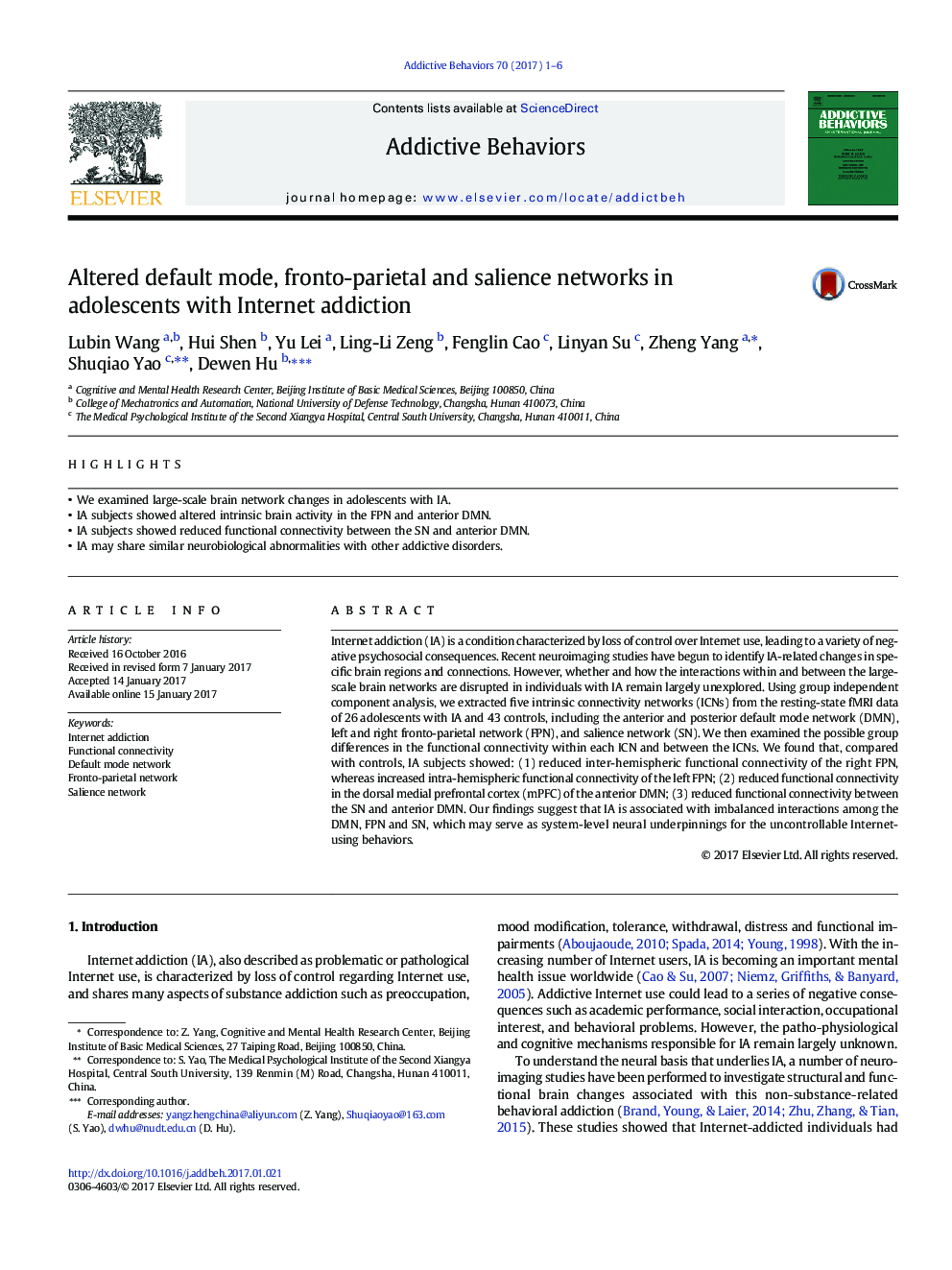| Article ID | Journal | Published Year | Pages | File Type |
|---|---|---|---|---|
| 5037810 | Addictive Behaviors | 2017 | 6 Pages |
•We examined large-scale brain network changes in adolescents with IA.•IA subjects showed altered intrinsic brain activity in the FPN and anterior DMN.•IA subjects showed reduced functional connectivity between the SN and anterior DMN.•IA may share similar neurobiological abnormalities with other addictive disorders.
Internet addiction (IA) is a condition characterized by loss of control over Internet use, leading to a variety of negative psychosocial consequences. Recent neuroimaging studies have begun to identify IA-related changes in specific brain regions and connections. However, whether and how the interactions within and between the large-scale brain networks are disrupted in individuals with IA remain largely unexplored. Using group independent component analysis, we extracted five intrinsic connectivity networks (ICNs) from the resting-state fMRI data of 26 adolescents with IA and 43 controls, including the anterior and posterior default mode network (DMN), left and right fronto-parietal network (FPN), and salience network (SN). We then examined the possible group differences in the functional connectivity within each ICN and between the ICNs. We found that, compared with controls, IA subjects showed: (1) reduced inter-hemispheric functional connectivity of the right FPN, whereas increased intra-hemispheric functional connectivity of the left FPN; (2) reduced functional connectivity in the dorsal medial prefrontal cortex (mPFC) of the anterior DMN; (3) reduced functional connectivity between the SN and anterior DMN. Our findings suggest that IA is associated with imbalanced interactions among the DMN, FPN and SN, which may serve as system-level neural underpinnings for the uncontrollable Internet-using behaviors.
